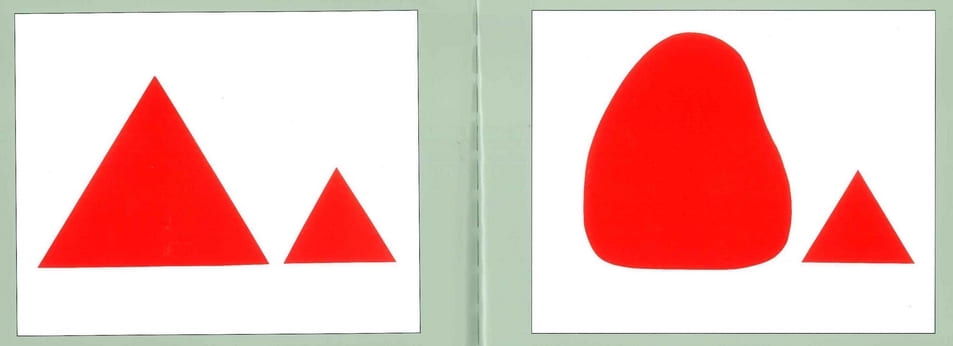Molly Bang‘s Website:
Picture This: How Pictures Work
First published in 1991. Twenty-fifth Anniversary Edition to be published in 2016.
About the Story
“I had illustrated several books and was working on The Grey Lady and the Strawberry Snatcher. A mathematician friend would occasionally come by to look, and we’d talk about pictures. One afternoon I was sketching some objects around the house when he encouraged me to make a whole picture: include some background, some foreground. I worked for a while, and even though I could draw individual objects, we realized I had no idea of how to get them to interact. I didn’t understand how a picture worked.
I went to museums and looked at paintings, I read books about painting, and I took painting lessons. I still didn’t get it. So I figured maybe if I tried teaching other people how to make pictures, I might learn myself. I decided to teach third graders, largely because my daughter was then in third grade and I could do it in her class (since people thought I knew what I was doing). I also thought third graders would keep me to the basics.
I began by making a scary picture from “Little Red Riding Hood,” since scary pictures are easy to make and we all knew the story. I used simple shapes cut from three, then four colors of construction paper. I worked with the children, then came home and tried to figure out what elements were making the pictures scarier or less scary, tried to figure out how all the elements related to each other. Gradually, I began to understand something about how the structural elements of pictures affect our emotions.
The children made fine pictures. But most third graders are not bursting with violent emotions, and since strong emotion was the aspect I found myself most interested in, I decided to work with seventh and eighth-graders. I taught several classes how to write a “Hero/ine Adventure-Journey Folktale” based on common folktale patterns, and I had the students illustrate their stories with cut construction paper. As we worked, we kept trying to figure out what changes elicited which feelings, and why. I got a clearer and clearer idea of certain principles that enable artists to imbue pictures with fairly specific emotions.
The following year, with the help of Ann Stern, I honed the course in Cambridge public schools and eventually self-published two manuals: one for how to write the tales, one for how to illustrate them. I taught the course for several years to high school and college students, teachers, non-teachers, men and women in jail. It became clear that the folktale format was a good way for each person to tell a tale that both worked as a story and gave insight into the writer’s own fears and abilities.
The course was also a very effective way for people to begin to understand how pictures work. Yet I realized that the principles apply not only to folktale illustration, but to sculpture, movies, architecture – to all the visual arts, so I wrote up the picture section of the course separately as Picture This. After being rejected by about twenty publishers, the book was finally published by Little, Brown, and went out of print a few years later. I was really happy – and proud! – when David Reuther at Seastar decided to republish it with a new cover and overall design. Seastar was later bought by Chronicle Books and Chronicle is again revising the design and cover and bringing out a 25th anniversary edition in the fall of 2016.
Picture This explores one basic question about how we see things: How and why do structural elements affect our feelings? The book is a ground for understanding this aspect of visual art and for and making it.”
